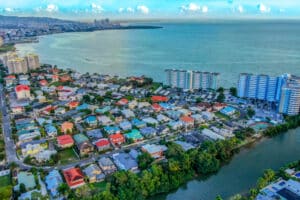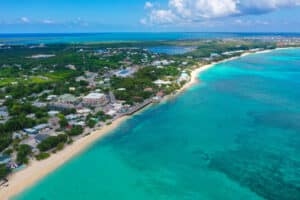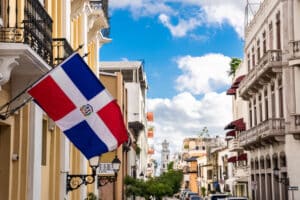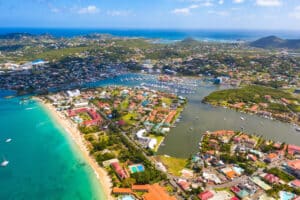You’ve all but packed your bags, booked your flights, and reserved your accommodation in Antigua, when you remember the most important question: what is the best time to visit this lovely Caribbean island?
- Sun, sun, and only sun: the best time to visit the island is during the dry season, between mid-December and mid-April.
- Rain and hurricanes: the worst time to visit Antigua is during the wet season, between June and November, when rain and hurricanes are most prominent.
- Far from the madding crowd: January, September, October, and November are the best months to visit if you want to avoid large crowds.
- Saving up: late winter (January) or autumn (September, October, and November) are the best times to visit if you’re trying to save a few bucks.
- Carnival time: to catch one of Antigua’s carnivals, visit during the winter, spring, and summer months.
- All aboard: the best time for sailing is between December and May, or during the dry season.
But when exactly are the various carnivals? What is so special about sailing during the dry months? Read on for in-depth answers to everything.
Are you planning a last minute trip to Antigua? We’ve put together all the resources you’ll need for a fun & safe travel:
🛌 Best & Safest Places to Stay in Antigua:
👉 Carlisle Bay – Spa and wellness centre, Airport shuttle (free), Fitness centre
👉 South Point Antigua – Room service, Restaurant, Private beach area
👉 Gunpowder House & Suites – Airport shuttle, Free WiFi, Room service
👉 The Inn at English Harbour – Fitness centre, Free WiFi, Outdoor swimming pool
⛱️ Fun Activities & Tours in Antigua:
👉 Adventure Antigua – The Xtreme Circumnavigation
👉 Night Kayaking with Liquid Glow
👉 E-Bike Tour of Antigua Forts and Beaches
🚗 Best & Safest Antigua Transportation Services:
👉 Airport Pickup Service – Welcome Pickups
👉 Rent a Car – DiscoverCars
🙏 Stay Safe While Travelling:
👉 Safetywing (for medical insurance)
👉 VisitorsCoverage (for trip insurance)
Sun, Sun, and Only Sun! The Best Time to Visit Antigua
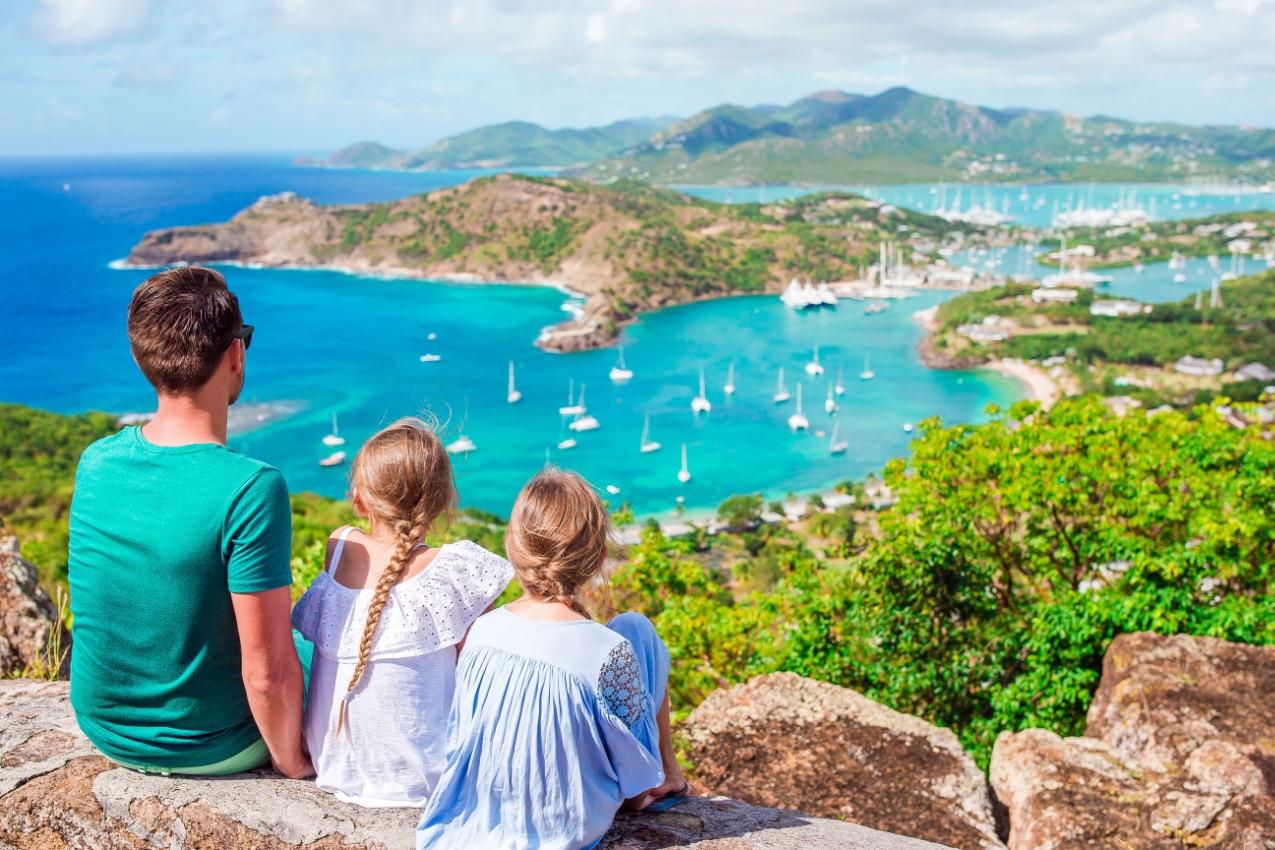
The best time to visit Antigua is between mid-December and mid-April, which is basically winter to late spring. That period covers most of the so-called dry season in the Caribbean.
It’s the perfect time of year if you want to spend most of your time on one of Antitua’s 365 beaches. This period is marked by sunny days, and the chances of rain ruining your plans are pretty slim. In fact, the average rainfall barely amounts to two inches a month.
The winter in Antigua — like in most of the Caribbean islands — is both the driest and the “coldest” season on the island. Luckily for tourists, “cold” means a temperature of around 28°C (82°F), which is perfect if you want to lounge on the beach all day. Spring days range from 28°C to 30°C (82°F and 86°F). Summer is somewhat hotter, with an average temperature of 31°C (87°F).
Rain and Hurricanes: The Worst Time to Visit Antigua
The worst time to visit Antigua is during the wet season, which is between June and November. The late summer and autumn months are the least safe and most boring period in the Caribbean.
Antigua has a tropical climate, with dry and wet seasons dividing the year into almost two equal halves. Obviously, the dry season is ideal for tourists who want to spend most of their time outside, either sunbathing and swimming on the beach, or visiting some of Antigua’s famous landmarks.
The wet season is marked by frequent rain. The months from June to November have 13 rainy days on average. And yet, tourists visit Antigua throughout the whole year, as those 13 days of rain are not enough to discourage travelers.
The main reason this period is the worst time to visit Antigua is because of the hurricanes, the most dangerous natural phenomena in the Caribbean. Hurricane season is between June and November.
Although the chance of a dangerous hurricane is small, hurricanes are not to be trifled with. In 2017, hurricane Irma — a level-five classified hurricane (the strongest on the list) – hit this part of the Caribbean, causing considerable damage to public buildings and infrastructure. Almost 95% of Barbuda, the second island in this dual-island nation, was destroyed by this hurricane.
Far From the Madding Noise: When to Visit Antigua to Avoid Crowds
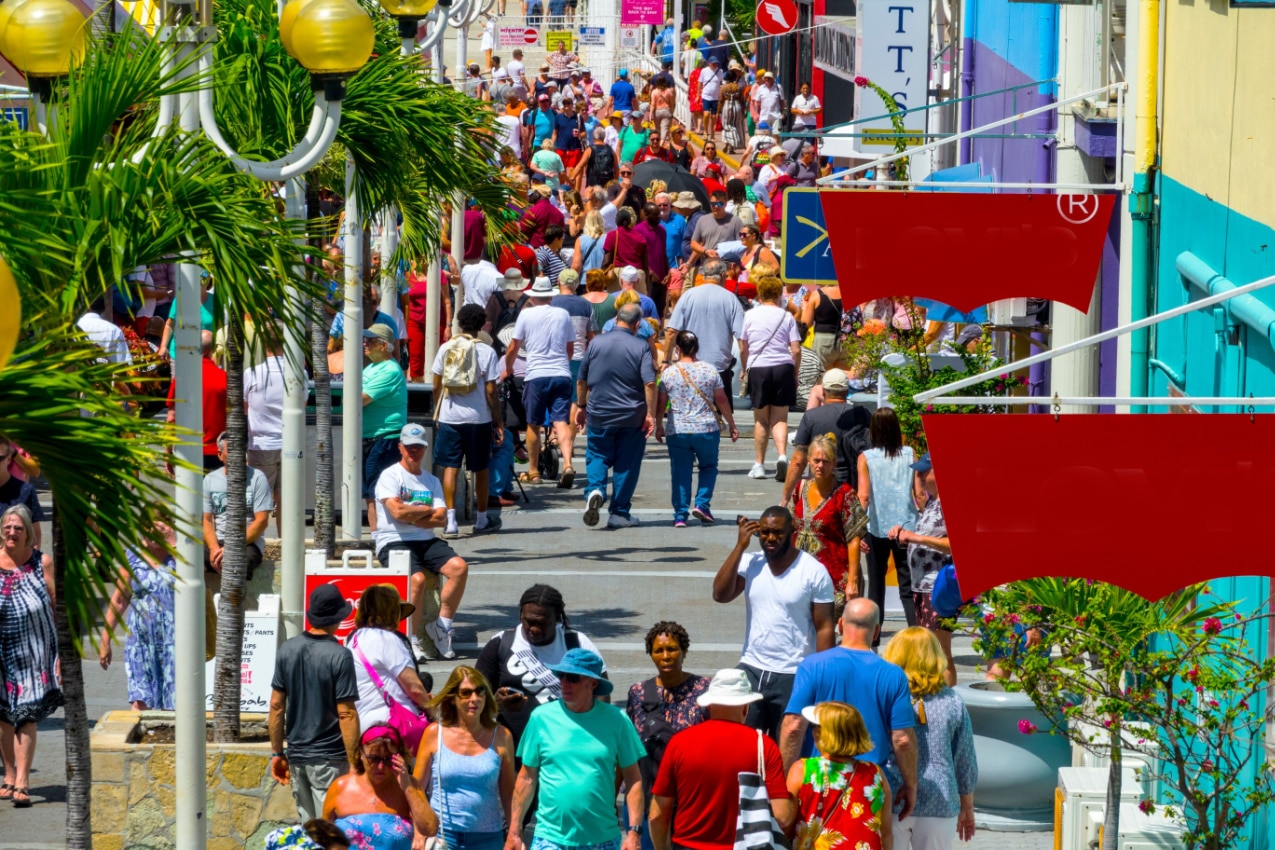
Antigua is quieter and less crowded in January, September, October, and November.
During peak tourist season, Antigua is swarming with visitors — its hotels are booked up, and people queue up in front of restaurants, cafes, and shops. The one exception during the dry season when you can still get some peace and quiet is January.
This is because January — in almost every part of the world — starts slowly. Christmas (both Catholic and Orthodox) and New Year’s Eve are celebrated around the world, and Antigua is no exception as the island is predominantly Christian. Needless to say, January is considerably quieter and less crowded than busier months like February, March, and April.
It’s more obvious why the autumn months are less crowded. There’s rain, high temperatures, and higher chances of a hurricane storm. Not just in Antigua, but throughout the Caribbean, September, October, and November are the lightest months, in terms of tourists.
These months may be viable for a more relaxed and quiet trip, but keep in mind that a lot of hotels and restaurants take a break for maintenance during these months, as well.
Save a Few Bucks: The Most Affordable Time to Visit Antigua
The same months – January, September, October, and November – are also the most affordable time to visit Antigua.
Since these months are off season (as opposed to tourist season), both flights and hotels are considerably cheaper.
January is basically perfect, since there’s practically no rain and the sun is mild. But you can also have a relatively sunny, storm-free vacation during September, October and November: hurricanes are actually not that frequent, and Irma was a rare occurrence in the natural history of the Caribbean.
Another period that’s more affordable than peak tourist season is the low season, between June and November.
Carnival Time! The Best Time to Visit Antigua for Festivals
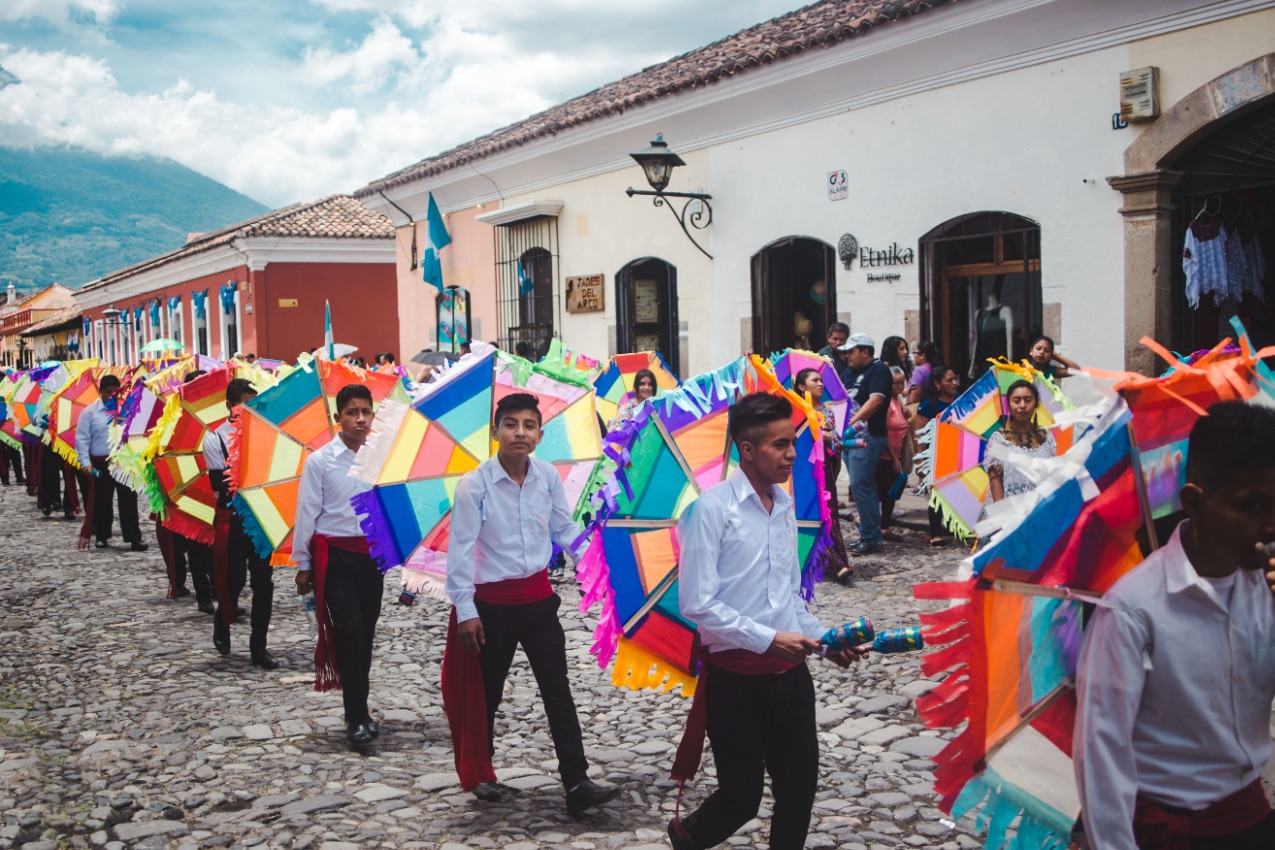
Antigua has festivals in winter, spring and summer. The only season that offers no notable festivals is autumn.
Since Antigua’s population is predominantly Christian, Easter and Christmas celebrations are lively, colorful, and spirited – you don’t want to miss it!
Here’s a short list of the most popular festivals in Antigua:
- Wadadli Day is the annual celebration of Antigua’s culture. It takes place sometime in February (the exact date varies). Wadadli Day is held in St John’s Botanical Gardens where different kinds of strategic games are played under the shade of trees.
- Easter weekend is marked by the most important kite-flying festival in the wider Caribbean area. Almost every resident of Antigua — no matter the age — flies a kite during Easter weekend in April.
- The Annual Seafood Festival, again in April, is probably the most important event in the year for foodies. Held at the Urlings Wharf, and organized to promote the fishermen of Antigua and Barbuda, the festival boasts freshly-caught fish and different types of seafood, as well as plenty of craft booths, live music, and fun competitions.
- Antigua Sailing Week is held during April and early May. It’s the most important sailing festival in the world, and it takes place on the southern shore of the island. The week is further celebrated with plenty of events in the historically notable Nelson’s Dockyard.
- Antigua’s Carnival is probably the most famous, most visited, and most celebrated festival on the island. It celebrates the end of slavery both on the island and in the Caribbean at large. Held between late July and early August, it offers ten days of non-stop music, partying, eating, drinking, and a colorful atmosphere with creative decorations.
- Independence Day, held on November 1st, celebrates the independence of Antigua and Barbuda from Great Britain in 1981. Sirens and bells ring throughout the city, and all the public institutions are adorned with red and yellow decorations. Again, the city is filled with parades, music, and fun events.
All Aboard! The Best Time for Sailing in Antigua
There’s a good reason why the Antigua Sailing Week has global appeal for sailing enthusiasts.
The island is especially popular with sailors thanks to its calm ocean, picturesque nature, relatively good weather, and year-round sailing opportunities. But the peak of the sailing season is between December and May — during the dry season. What more could a sailor want than soft sun, congenial winds, and scarce wind? Expect east or northeast trade of about 20 knots.
Additional historical and cultural landmarks in the area that sailors may appreciate include:
- The UNESCO world heritage site of English Harbour (also known as Nelson’s Dockyard)
- Green Island
- Deep Bay
365 Beaches — Here We Come!
We’we reached the end of our adventure on the beautiful island of Antigua. But, before we leave its 365 beaches, Nelson’s Dockyard, and the numerous yachts anchored near the shores of the island, let’s do a quick recap of the best and worst time to visit Antigua.
The best time to visit Antigua is during the winter and the early spring, between December and April. This is the dry season – so it comes with no rain, temperate sun, and warm water.
The worst time to visit Antigua, on the other hand, is between June and November, which is the wet season. The temperature is at its highest and it rains quite frequently. In particular, you may want to avoid the peak of the hurricane season – September, October, November. Although these months are considered the least safe, hurricanes are not actually that frequent.
But don’t forget – there’s something to enjoy in Antigua, year-round!
